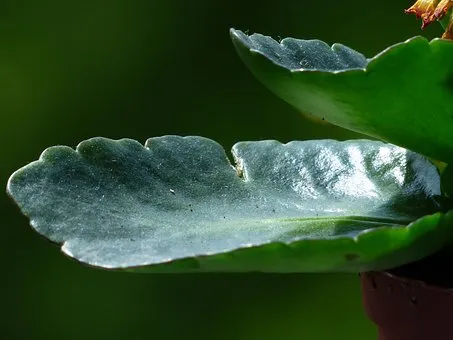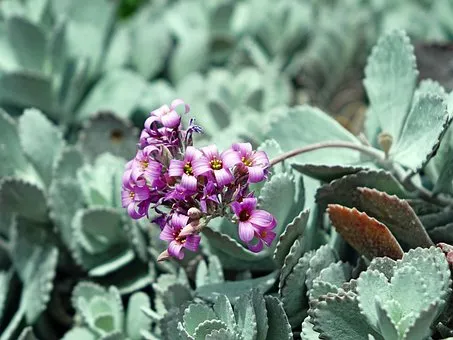Hello everyone,
Hola a todos,
Today giving thanks to God, for all the good things that he has not given away every day and does not continue to bless, in my community we were without electricity for 12 hours, how exhausting to be in those conditions, but well at that time we made it productive we carried out several activities At home, that was the gardening that was done in the morning, among the medicinal plants that my cultivated mother has, there is a very peculiar one that is known as the Liberator, or the Liberator, but its scientific name is Kalanchoe pinnata, in my We have used the house in different ways because it has great benefits.
Hoy dando gracias a Dios, por todo lo buenos que no ha regalado cada día y no sigue bendiciendo, en mi comunidad estuvimos sin fluido eléctrico durante 12 horas, que agotador estar en esas condiciones, pero bueno en ese tiempo lo hicimos productivo realizamos varias actividades en casa, esa estaba la jardinería que se realizo en horas de las mañana, entre las plantas medicinales que tiene mi madre cultivada tiene una muy peculiar que es conocida como la Libertadora, o la Libertadora, pero su nombre científico es Kalanchoe pinnata, en mi casa la hemos utilizado en diferentes formas porque posee grandes beneficios.
A few days ago I was fixing a cable in the kitchen and I did not notice that a block was broken, a piece falls hitting my forehead, leaving me a small bump (lump on the forehead), my mother when she sees me goes out to the garden takes a leaf of this plant, the lava, places it to warm in a budare, then with menthol puts it on my forehead, I confess that the blow was reduced quickly and I do not stay mark, that is why I want to share with you this experience and the different benefits it possesses.
Haces unos días atrás estaba arreglando un cable en la cocina y no me percate que un bloque estaba quebrado, me cae un pedazo golpeándome la frente, dejándome un pequeño chichon (Bulto en la frente), mi madre al verme sale al jardín toma una hoja de esta planta, la lava, la coloca a tibiar en un budare, luego con mentol me la pone en la frente, le confieso que el golpe se redujo rápido y no me quedo marca, por eso quiero compartir con ustedes esta experiencia y los diferentes beneficios que posee.
Kalanchoe is a plant with healing properties widely used in traditional medicine, thanks to its large components such as: phenols, acetates and flavonoids, salicylic acid, enylic acids, p-idroxybenzoic, coumaric, ferulic, citric, beta-yellow, lactic, fumaric, oxalic, and succinic; triterpenes alpha and beta-amirin. Of this type of plant there are up to 125 species of the Crassulaceae family, some very well known.
La Kalanchoe es una planta con propiedades curativas utilizada mucho en la medicina tradicional, gracias a sus grandes componente como el: fenoles, acetatos y flavonoides, ácido salicílico, enílico acidos, acido p-idroxibenzoico, cumarico, ferulico, cítrico, beta-amarina, láctico, fumárico, oxálico, y succínico; los triterpenos alfa y beta-amirina. De este tipo de planta existe hasta 125 especies de la familia crasuláceas, algunas muy conocidas.
The Kalanchoe is a plant that reproduces through its leaves (some species sprout the children in its leaves known as the mother), it should only take one leaf, place it with a damp paper after 5 days you will have a germinated leaf, in turn also It can be produced by seed but will last longer in growth, it does not need much care, watering should be little once or twice a week, thanks to the fact that its leaves can conserve the water it needs. In order to observe its flowering it will need 13 hours in darkness, at this time it will need fertilizer.
La Kalanchoe es una planta que se reproduce mediante sus hojas (algunas especies brotas los hijos en su hojas conocida como la madre), esta solo debe tomar una hoja colocarla con un papel humedecido a los 5 días tendrás una hoja germinada, a su vez también puede ser producida por semilla pero durara mas tiempo de crecimiento, no necesita mucho cuidado, el riego debe ser poco una o dos veces por semana, gracias que sus hojas puede conservar el agua que necesita. Para poder observar su floración necesitara 13 horas en oscuridad, en este tiempo necesitara de abono.

Benefits
- Used to treat gingivitis and oral inflammation.
- For rhinitis.
- Ulcers (internal and external).
- Fights urinary infections.
- Eliminates back pain.
- Analgesic as for headaches and migraines.
- Eliminate stye eyes.
- Eliminates fungus on the feet and calluses.
- Helps heal burns and wounds.
- Help nose, ear and throat diseases.
- Rejuvenates the skin thanks to its moisturizing properties.
- Muscle relaxant.
- Elimination of Cyst in Ovaries.
Beneficios
- Utilizada para tratar la gingivitis e inflamación bucal.
- Para la rinitis.
- Ulceras (interna y externa).
- Combate infecciones urinarias.
- Elimina dolor de espalda.
- Analgesico como para dolores de cabeza y migraña.
- Elimina lo orzuelo los ojos.
- Elimina hongos en los pies y callosidad.
- Ayuda a sanar la quemaduras y heridas.
- Ayuda enfermedades de nariz, oído y garganta.
- Rejuvenece la piel gracias a su propiedades hidratantes.
- Relajante muscular.
- Eliminación de Quiste en Ovarios.
Uso:
Externo:
Esta se utiliza en forma de cataplasma, se puede añadir un poco de aceite (oliva, coco, almendra) y se coloca en el lugar afectado, otra forma es colocar la hoja en microonda se tibia y se coloca en el lugar afectado.
Interno:
Tomarla en forma de infusión o ensalada. No tomar de hoja de esta planta diaria (se recomienda tomar las hojas de abajo que son la mas antiguas).
Hay personas que la come en ayunas, toma dos hojas de la plantas y la mastica.
Use:
External:
This is used in the form of a poultice, you can add a little oil (olive, coconut, almond) and place it in the affected place, another way is to place the leaf in a microwave, warm it and place it in the affected place.
Internal:
Take it as an infusion or salad. Do not take the leaf of this plant daily (it is recommended to take the leaves below that are the oldest).
There are people who eat it on an empty stomach, take two leaves from the plants and chew it.
Note: I could not take the photo of the plant in my garden due to the second blackout we had today, one of 12 hours, another of 4 hours.
Nota: NO pude tomar la foto de la planta de mi Jardin por el segundo apagón que tuvimos hoy, una de 12 horas, otra de 4 horas.
Fuente: https://primicia.com.ve/especiales/yerberito/conoce-bondades-medicinales-de-la-libertadora/
